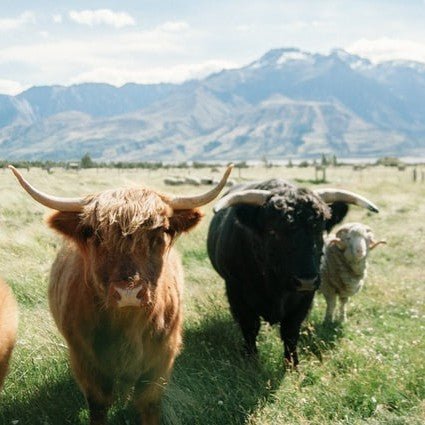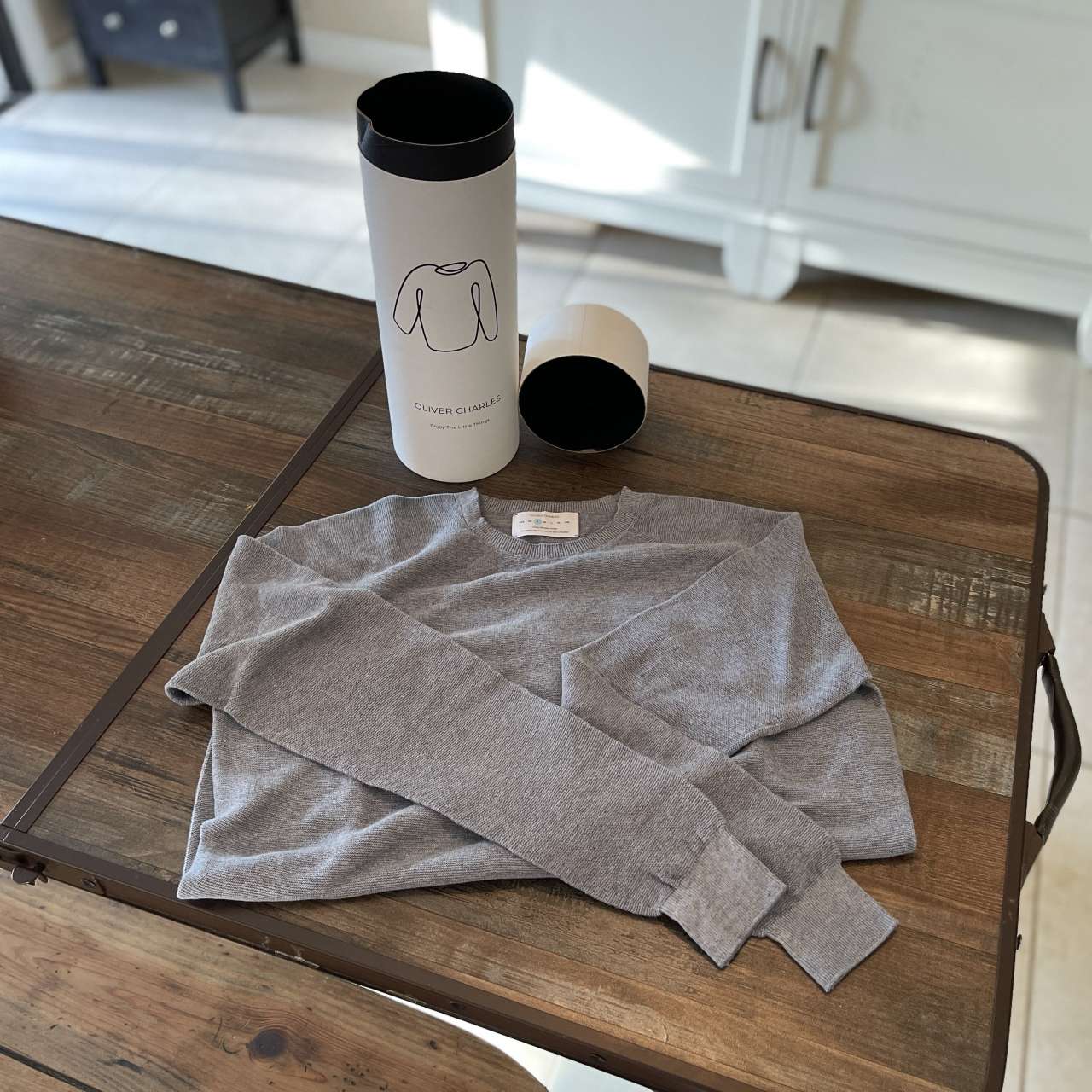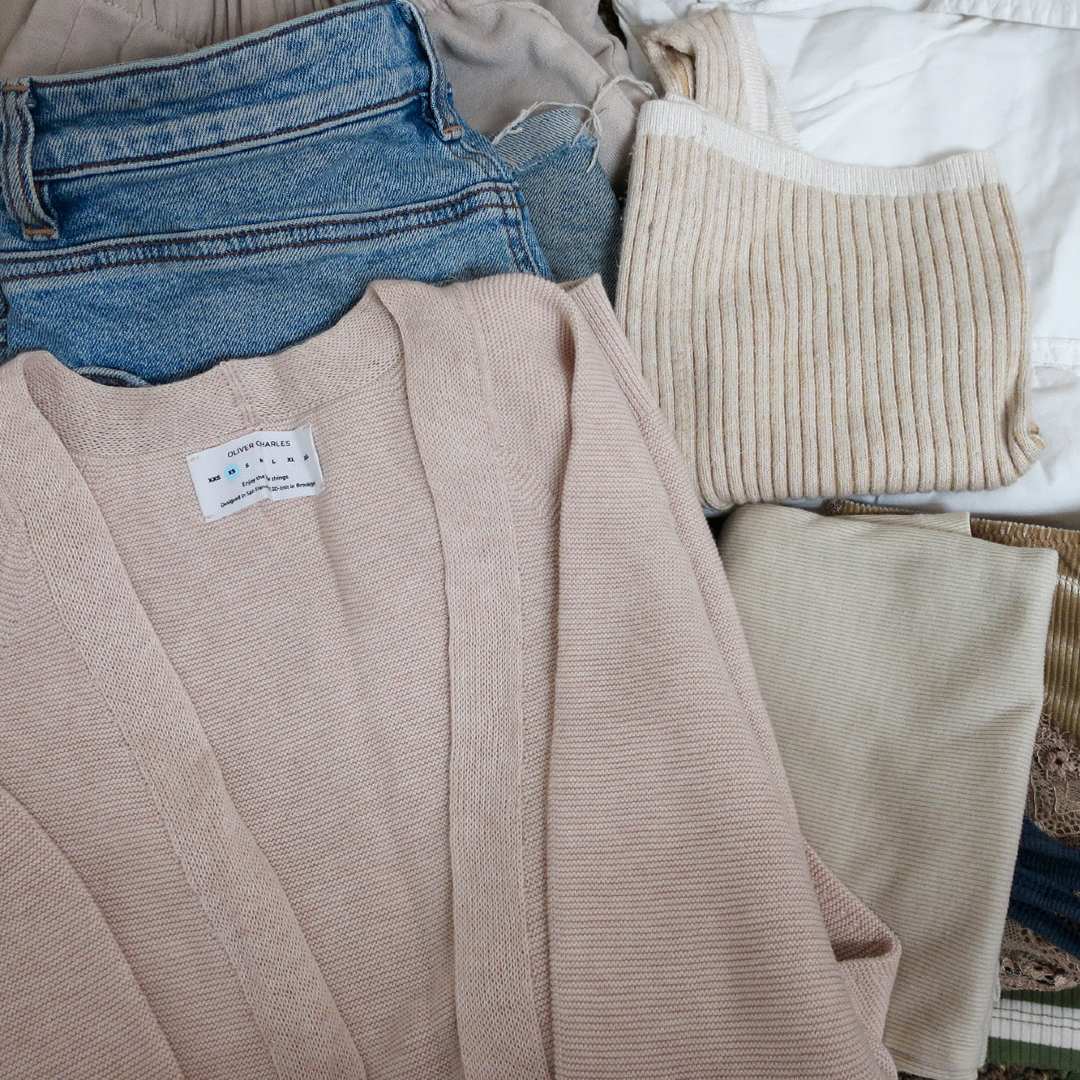3D-Knitting In An Inventory-Less World
3D-knit the inventory you want, when you want it, and nothing more.
April 14, 2022
By Oliver Charles
Why Oliver Charles 3D-Knits Sweaters
Introducing a 4-part blog series about 3D-knitting.
While 3D-knitting remains more expensive than cut-and-sew and other forms of high volume manufacturing, we strongly believe it’s worth it.
- Guide To 3D-Knitting
- Why 3D-Knitting Is Worth It
- On-Demand = No Inventory Waste
- 3D-Knitting Has Unlimited Potential
----------
When we started working on Oliver Charles, many people told us, "to launch, you should plan to create clothing lines, not clothing items".
A lot of the advice we got was to make a collection of seasonal items, hope predicted inventory was right, and then repeat over and over again.
The problem with this framework is it’s unsustainable.
Did you know that 96 billion lbs of excess clothing are disposed of every year before ever reaching a home?
Even worse, 3 billion lbs of that excess ends up being produced just to later be tossed in a landfill or incinerated. These number had us wondering:
- Why should we create collections each season designed based on our best guess?
- What's an alternative to this fast fashion consensus?
- How can we reduce the amount of excess we create, minimizing our impact on the planet?
The fast fashion model of seasonal excess was immediately unappealing to us.
Growing up in the Rocky Mountains, and as lifelong outdoor enthusiasts, we hated the idea of unsustainable practices.
Also, as a small Indiegogo funded company, we couldn’t imagine a world where we could even afford to produce so much inventory without knowing people wanted it first.
We knew that somewhere out there in the world there was a better way to create less, get more out of what we created, while also being good stewards of the Earth.
To find the solution we were looking for, we started researching the different ways in which clothes are made...

3D-knitting Vs. Cut And Sew
Cut-and-sew is one of the most high volume production methods.
Cut-and-sew manufacturing is so common that there is a high likelihood that the clothes you’re wearing right now were produced through this method.
Cut-and-sew is exactly as it sounds. To make a garment, large fabric panels are stacked, cut into panels, and then sewn together.
3D-knitting is different from cut-and-sew mainly because garments are made as 1 continuous knit.
There are no panels or seams, just 1 whole garment.
Beyond the process, 3D-knitting creates more durable, sustainable garments that are, on average, 10% lighter without seam weight.
3D-knitting also produces less than 1% waste post production compared to the cut-and-sew industry avg. of 20%.
3D-Knitting Is Only 1 Type Of Knitting
The most important forms of knitting to know about are circular and flatbed knitting.
Within flatbed knitting there are 2D and 3D processes for creating knits.
Understanding the technologies and processes behind clothing production will clearly show why 3D-knitting is the best performing and most sustainable form of manufacturing.
Jumberca TLJ-6E circular knitting machine making a sweater. pic.twitter.com/YnIpTlW3Tu
— MachinePix (@MachinePix) March 14, 2022
3D-Knitting Vs. Circular Knitting
Circular knitting works a lot like it sounds. Simply, circular knitting allows for fabric to be knit in a tubular form.
Circular knitting is most commonly used for fabric (later used in cut-and-sew), hats, and socks.
Although, another popular application of circular knitting is making pullovers.
Unlike flatbed 2D-knitting (more below), circular knitting can create the body of a pullover as a seamless piece.
While it’s still necessary to cut armholes, sew in sleeves/collar, and finish shoulders of a circular knit pullover, side seams can be eliminated through this production method, creating a more comfortable fit.
Also, circular knitting is much faster than other forms of knitting and is thus the most cost-effective method for high volume production.
Learn how @StollFTNY's flatbed knitting machines and digitization technology will allow us to produce complex, customized products at our factory in St. Louis.https://t.co/0rbwhgWWey#STOLL #flatbedknitting #knitmanufacturing #manufacturingtech
— Evolution St. Louis (@evolution_stl) October 31, 2019
3D-Knitting Vs. 2D-knitting
Instead of a rectangular block of fabric, fully fashioned 2D-knitting is made to shape - like a rhombus!
2D-knitting is the production method used to describe flatbed knitting machines creating individual panels of a single garment.
For instance, in a full 2D-knitting production process, a manufacturer would separately flat-knit the torso, collar, sleeves, pocket, and any other trim that’s designed for the finished garment.
While the 2D-knitting process does create finished edges, each panel knit still goes through the process of being sewn together into the finished garment.
2D-knitting is a more labor intensive and time consuming method than circular knitting and cut-and-sew, but waste from this method is relatively lower because the knitting machine creates pre-shaped panels that don’t need to be cut out of larger rectangular fabric blocks.
2D-knitting is one of the most common forms of knitwear because it’s fast and more sustainable than circular knit → cut-and-sew.
What Is 3D-Knitting?
3D-knitting happens on the world’s most advanced computerized knitting machines.
As the name alludes to, the 3D-knitting process creates three dimensional anatomically precise garments.
Unlike both circular and 2D-knitting, 3D-knitting is 100% seamless. Because the 3D-knitting machines can create whole garments as one continuous knit, this form of knitting does not require either cutting or sewing.
Removing cutting, eliminates wasted fabric, and removing sewing eliminates error, bulk, and as you’ll learn later in this blog, the need for inventory.
For its many benefits, 3D-knitting is a slower production process than circular knitting.
3D-Knitting "Smart" Clothing
A 3D-knitting machine can create garments with conductive materials, sensors, and other hardware, enabling clothes to monitor your health in a similar way as a Fitbit.
The future of knitwear will include ways for your clothes to react to sensor data as well.
For example: if you wear a 3D-knit sweater with sensors on a hot day, the sensors would be able to tell that your body is overheating then react by cooling down…
And yes, this does seem like a lot of work when you could just wear yak wool.
3D-Knitting On-Demand Inventory
One of the main benefits of 3D-knitting is that it allows for on-demand production or just in time inventory.
Instead of buying large quantities, often in excess, 3D-knitting helps companies like ours produce only what they need and nothing more.
Because 3D-knitting machines do not require cutting fabric or sewing panels together, garments made from this production method are streamlined.
Once you have a 3D model of the item locked in, you can have a 3D-knitting machine standing at the ready for when a customer places an order.
Now imagine the above process but add the ability to create custom fits.
WHOLEGARMENT® has been working on a technology called MADE2FIT, which would in theory allow our community to 3D-scan their body using a smartphone app and then order custom fitting sweaters.
3D-knitting On-Demand Benefits
So much is possible in an inventory-less world! We’re working towards using 3D-knitting to create sizes and styles of sweaters on-demand.
We imagine a future where we switch to producing only what we need, when we need it, and nothing more.
Through 3D-knitting, on-demand production is possible. We imagine it would work like this:
After careful consideration, you order a comfortable 3D-knit sweater.
Our 3D-knitwear partners in Brooklyn get pinged the details.
The 3D-knitting machine starts its engine and knits your sweater. After seamlessly knitting your sweater, it’s plucked and beautifully packaged.
Without ever sitting as inventory, the sweater is off to become your go-to.
96 billion lbs of excess clothing are disposed of every year before ever reaching a home.
On-demand manufacturing will allows us to sustainably make only what we need, which is great news for the planet and for us as a small brand.
We’d much rather spend money on our customers than sitting on inventory.
If you believe that every good wardrobe starts with owning less and owning better, consider buying yourself an OLIVER CHARLES sweater.
Shop Now10 Amazing Types Of Wool You Should Know About
There are countless wools from countless animals. 10 you should know about and which is best.
Read moreDiscovering Enclothed Cognition With A SeaCell Sweater
The intricate relationship between our wardrobe and our psyche.
Read moreSustainable Sweaters: Superficial Or Deeply Consequential?
Our clothing choices play a significant role in reducing waste and pollution.
Read more1-Week Sweater Challenge: 7 Different Ways Of Styling A Sustainable Sweater
Solidifying the importance and benefits of cultivating a sustainable wardrobe.
Read more



